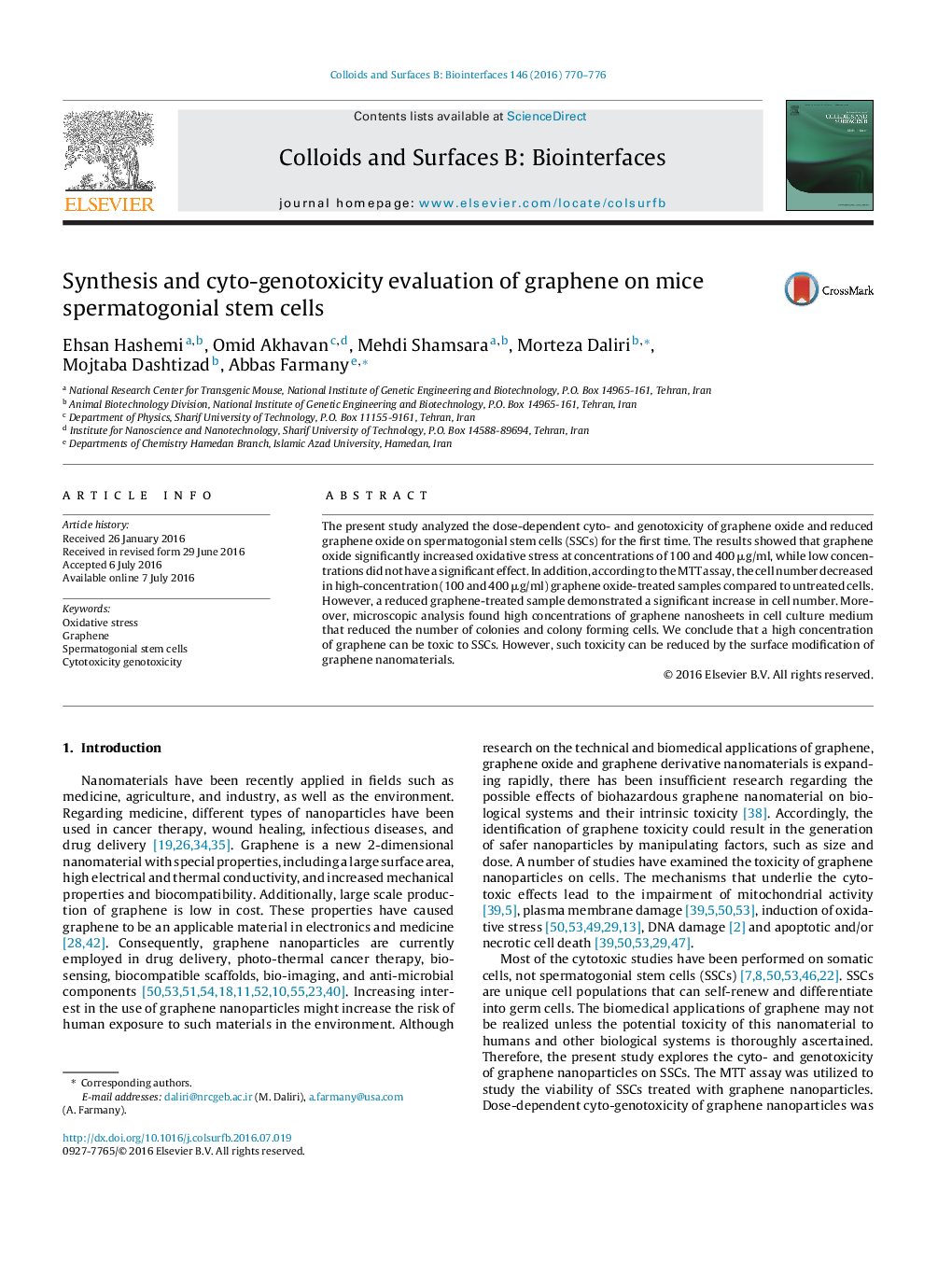| Article ID | Journal | Published Year | Pages | File Type |
|---|---|---|---|---|
| 598809 | Colloids and Surfaces B: Biointerfaces | 2016 | 7 Pages |
•Cyto and genotoxicity of graphene oxide and reduced graphene oxide on the spermatogonial stem cells (SSCs) was studied.•Graphene oxide increased oxidative stress at 100 and 400 μg/ml.•High concentrations of graphene is toxic.
The present study analyzed the dose-dependent cyto- and genotoxicity of graphene oxide and reduced graphene oxide on spermatogonial stem cells (SSCs) for the first time. The results showed that graphene oxide significantly increased oxidative stress at concentrations of 100 and 400 μg/ml, while low concentrations did not have a significant effect. In addition, according to the MTT assay, the cell number decreased in high-concentration (100 and 400 μg/ml) graphene oxide-treated samples compared to untreated cells. However, a reduced graphene-treated sample demonstrated a significant increase in cell number. Moreover, microscopic analysis found high concentrations of graphene nanosheets in cell culture medium that reduced the number of colonies and colony forming cells. We conclude that a high concentration of graphene can be toxic to SSCs. However, such toxicity can be reduced by the surface modification of graphene nanomaterials.
Graphical abstractGraphene increased oxidative stress in spermatogonial stem cells and cell death can be caused by this harmful stress.Figure optionsDownload full-size imageDownload as PowerPoint slide
